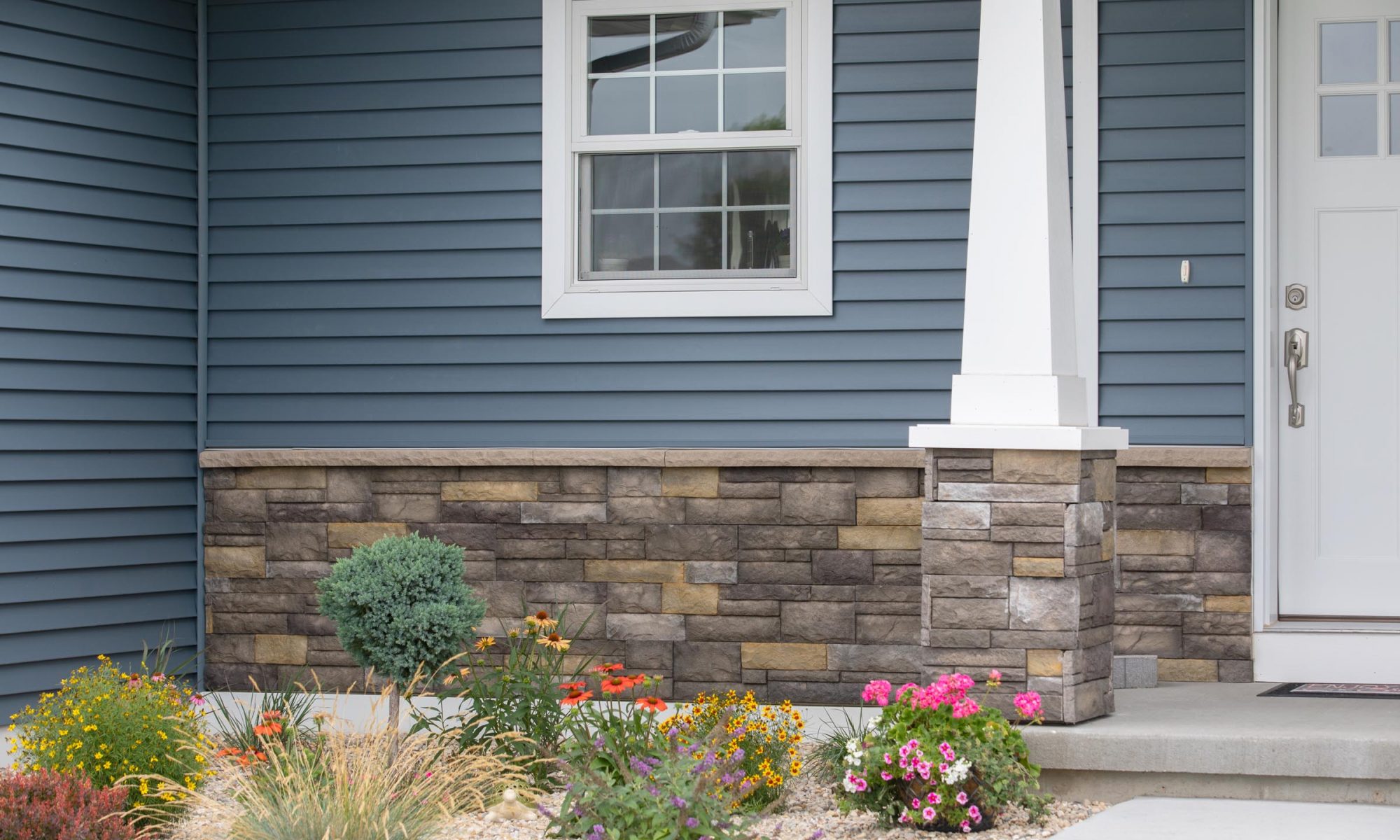Multi-textured facades are one of the most popular trends in home exteriors. And incorporating stone—on a half wall, on columns, or on bump outs and other architectural features—is one of the most common ways to create these varied looks.
Versetta Stone panelized stone siding makes adding these accents easy, combining the look of stone with mortar-free installation using just nails or screws. Each panel interlocks together, fastens through the nailing fin, and includes a built-in rainscreen.
Panelized Stone Installation Strategies for Cladding Transitions
Achieving a truly finished look when combining Versetta Stone with other materials to create coveted multi-textured facades is fairly simple, and the manufactured stone material is compatible with nearly all other claddings.
For stone half walls, adding Versetta Stone’s wainscot cap/sill creates the ideal finish and transition from the stone to the cladding above. The wainscot includes the same nailing fin as the siding for easy installation. Install flashing over the nailing fin and then shingle the other cladding over top to ensure water sheds off of the sill. Leave a small gap between the cladding and the stone, per each cladding’s installation instructions.
For side-to-side transitions, a simple J-channel or trim piece will ensure a finished look. As with the wainscot cap, be sure to flash at the transition point.
Plan Ahead for Multiple Cladding Materials
Aesthetically, Versetta Stone requires little planning—Ledgestone and Tight-Cut profiles are made from 20 different master molds that can be flipped, allowing for 80 square feet of wall coverage without visual repetition. With Universal Corners, corner intersections also are simplified; follow the installation instructions for a staggered left-right installation to achieve an authentic look.
One thing you do need to plan for with multi-textured facades are the weather-resistive barriers (WRBs) and flashings, as each cladding type has different requirements for housewrap and drainage. Versetta Stone, for example, has a built-in rainscreen to ensure the wall dries out, so it requires at minimum only a layer of #15 felt to maintain its warranty. TruExterior poly-ash siding requires a minimum of a drainable housewrap. So when installing the two products together, you’ll need to either wrap the entire façade in the more robust drainable housewrap or, to save money, plan the wall system accordingly so that the corresponding weather barrier is positioned under each cladding and properly transitions from material to material per guidelines from the WRB and cladding manufacturers.
To learn more about installing Versetta Stone panelized stone siding, download the Installation Guide or watch our installation series on YouTube.

